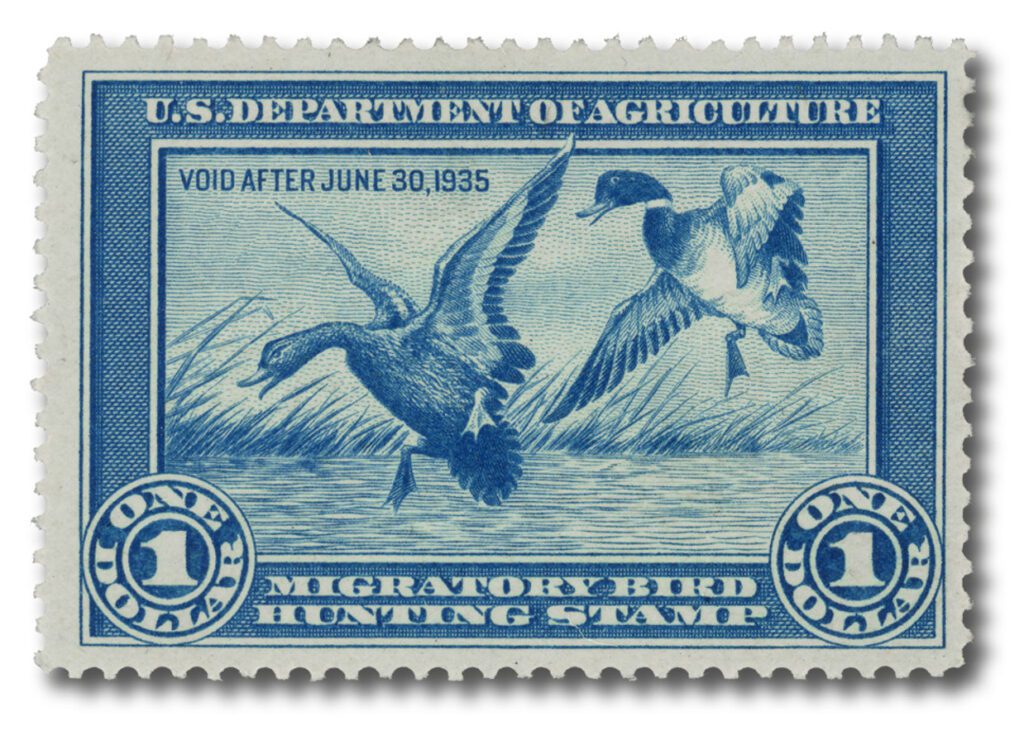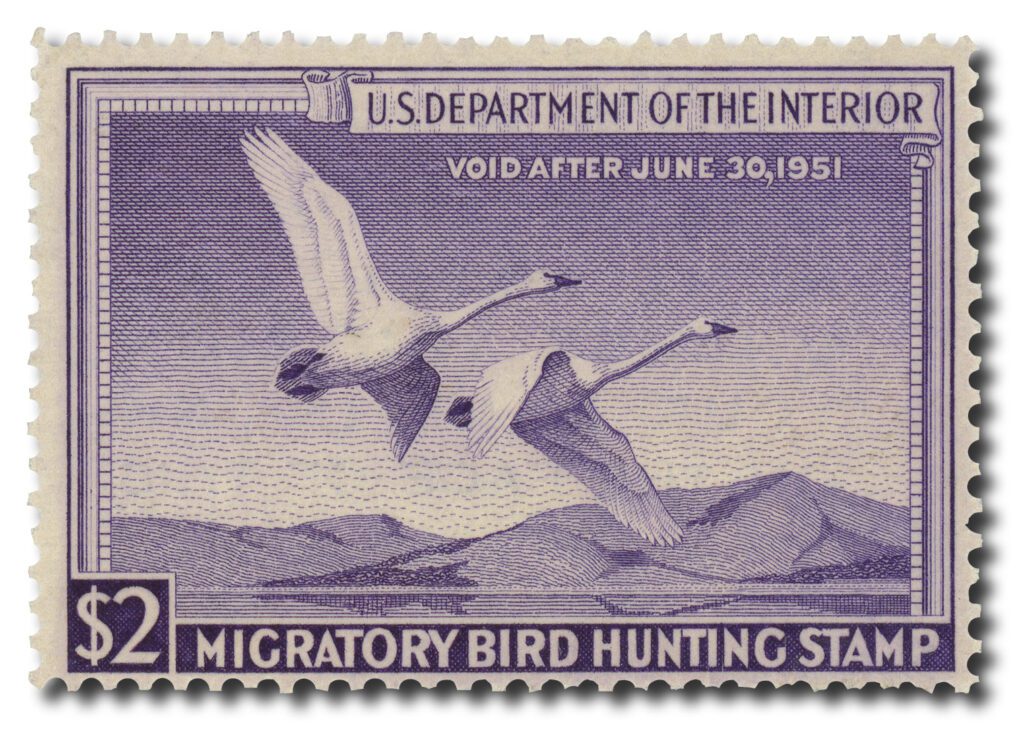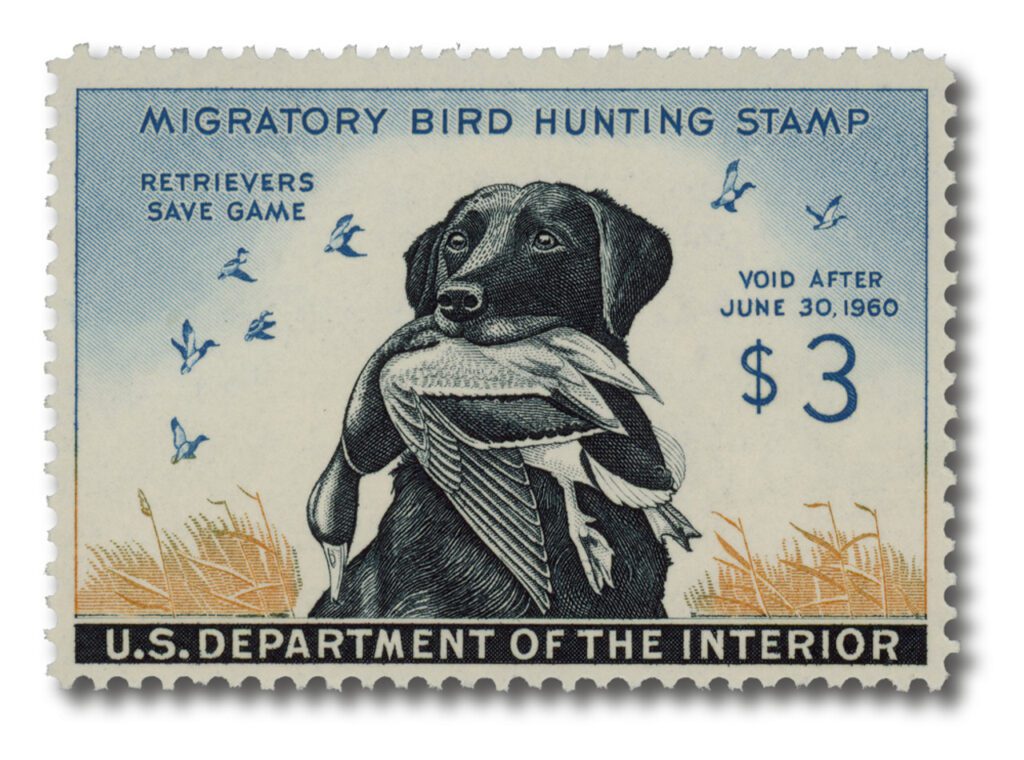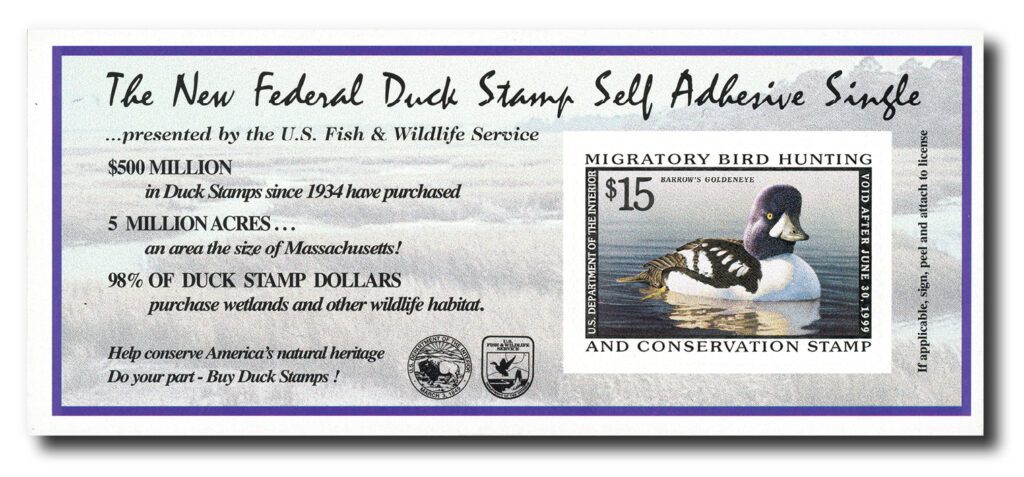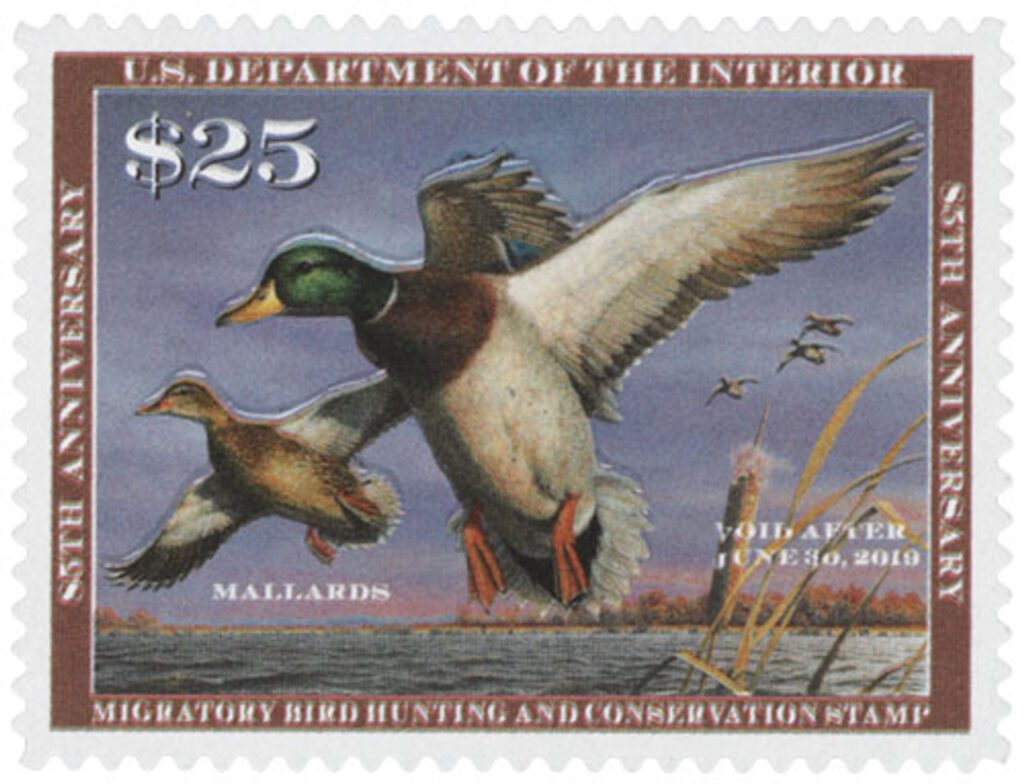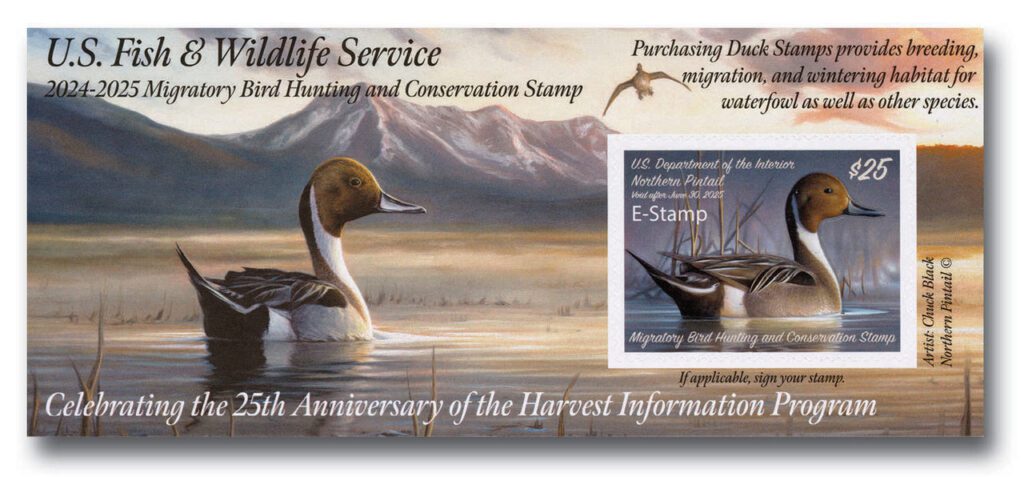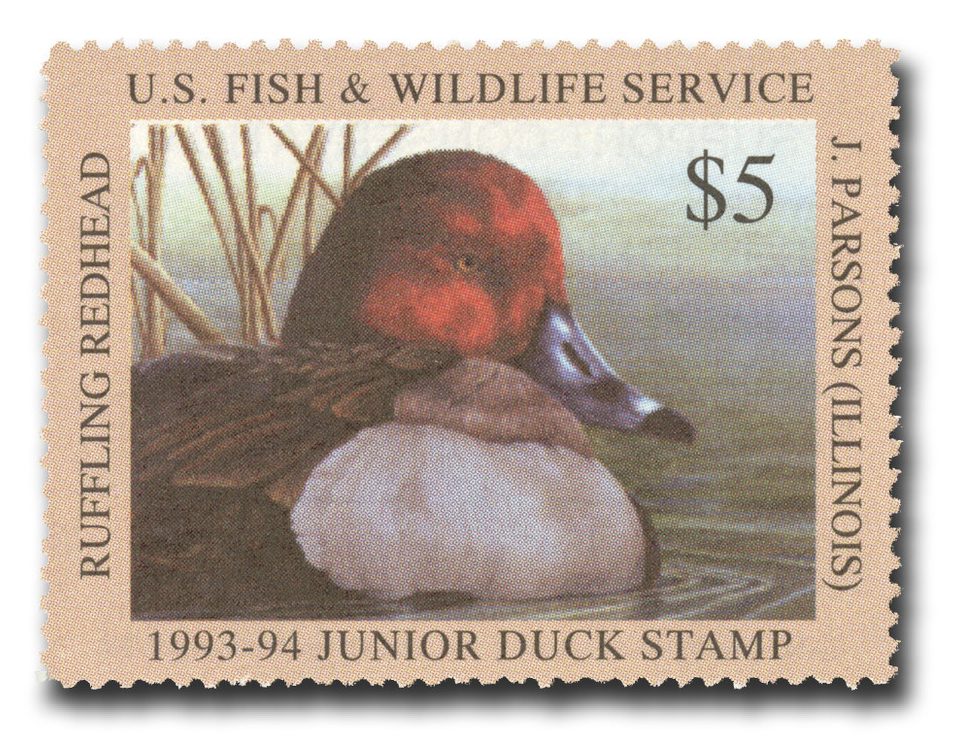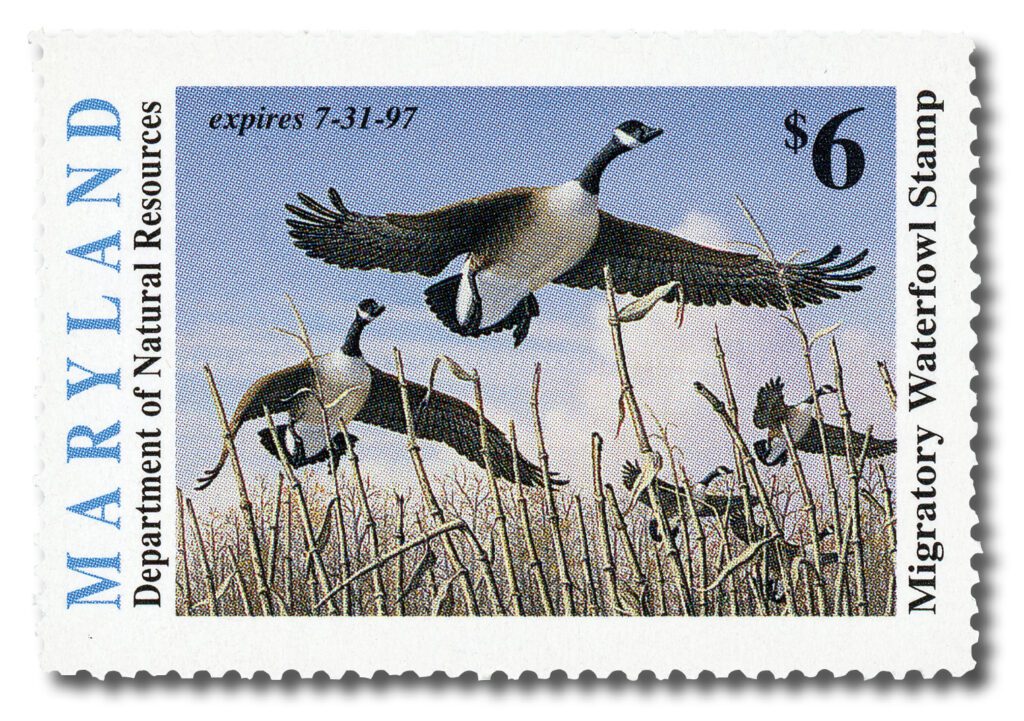The Story of America’s Duck Stamps
Migratory Bird Hunting and Conservation stamps, more commonly known as “Duck” stamps, have been a cornerstone of American conservation since their debut in 1934. The program was born out of the Migratory Bird Hunting Stamp Act, championed by conservationists and artists who saw the need to protect wetland habitats critical to waterfowl survival. Among the most influential voices was Jay Norwood “Ding” Darling, a political cartoonist and conservationist, who designed the very first stamp. His efforts, combined with mounting concern over declining waterfowl populations during the Dust Bowl years, helped launch one of the most successful wildlife conservation programs in history.
From the very beginning, the Duck stamp was more than a simple hunting license. It became a tool to fund the protection of wetlands, with nearly all proceeds directed to the Migratory Bird Conservation Fund. Over the decades, this fund has purchased and preserved millions of acres of habitat, ensuring that future generations can continue to enjoy America’s waterfowl and wetlands. Today, Duck stamps have raised more than a billion dollars for conservation efforts, proving the lasting power of the idea.
View our entire selection of Duck stamps here.
A Showcase of Wildlife Art
One of the most distinctive aspects of the Duck stamp program is the annual art competition. Starting in 1949, artists have been invited to submit original designs featuring North American waterfowl. The competition has grown into the nation’s longest-running federally sponsored art contest, and it remains the only art competition of its kind held by the United States government. Each year, a panel of judges selects a winning design, which is then used on the following year’s stamp.
The competition has launched the careers of many well-known wildlife artists, and the prestige of winning is immense. For artists, the Duck stamp contest represents a unique blend of artistry and conservation—an opportunity to create a lasting contribution to the protection of wetlands and waterfowl. For collectors, each new issue adds another piece to a remarkable timeline of American wildlife art.
Changes Over Time
For decades, Duck stamps were printed in traditional panes with water-activated gum, requiring moisture to affix them. That changed in 1998, when the United States Fish and Wildlife Service introduced a self-adhesive souvenir sheet. These panes had only one stamp and were designed to fit in cash registers at Walmart and sporting goods stores. Hunters appreciated the convenience, though many collectors still preferred the classic sheets. Over time, the demand for easier use grew, and the experiment laid the groundwork for broader changes to come.
In 2018, a major transition occurred: all federal Duck stamps became self-adhesive. This brought them in line with most modern United States postage stamps and reflected the practical needs of hunters who had to carry the stamp in the field.
The most recent innovation came in 2024 with the introduction of the electronic Duck stamp, or e-stamp. In select states, hunters can now purchase a digital version that provides immediate proof of purchase while waiting for their physical stamp to arrive in the mail. This modern option expands accessibility, especially for those who buy licenses online, and marks the latest step in the evolution of a program that has always balanced tradition with innovation.
To read more about E-Duck stamps, click here.
Junior Duck Stamps
In addition to the main program, the Junior Duck Stamp program has become an important educational initiative. Established in 1993, it allows students from kindergarten through high school to learn about wetlands and conservation through art. Each year, thousands of students nationwide submit entries to the Junior Duck Stamp Design Contest, and the winning design is sold as a special stamp. While these stamps do not carry hunting privileges, the funds raised support conservation education programs. For many young artists, participation in the contest is a gateway into both wildlife conservation and the world of philately.
View our entire selection of Junior Duck Stamps here.
State Duck Stamps
Beyond the federal issue, many states also produce their own Duck stamps. These state-issued stamps often feature local species and scenery, reflecting the unique ecosystems within their borders. Some states require hunters to purchase them in addition to the federal stamp, while others issue them primarily for fundraising and collecting. Collectors appreciate the variety of designs, which often showcase regional artistry and highlight the importance of wetlands in every corner of the nation. Together, state and federal Duck stamps provide an enduring reminder of how art, conservation, and philately can work hand in hand to protect America’s natural heritage.

